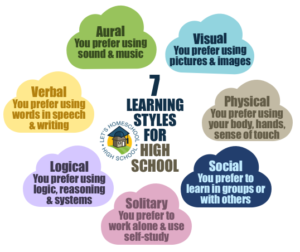< Previous ………. Next Topic >
Kick-Off: Student Expectations
Students are expected to follow course guidelines and actively participate in assigned work. Appropriate classroom decorum, reasonably focused effort, and combinations of individual-work and team-collaborations are important aspects of this curriculum.
Students in high school continue to develop their understanding of the four core ideas in the physical sciences. These ideas include the most fundamental concepts from chemistry and physics, but are intended to leave room for expanded study in upper-level high school courses. The high school performance expectations in Physical Science build on the middle school ideas and skills and allow high school students to explain more in-depth phenomena central not only to the physical sciences, but to life and earth and space sciences as well. These performance expectations blend the core ideas with scientific and engineering practices and crosscutting concepts to support students in developing useable knowledge to explain ideas across the science disciplines. In the physical science performance expectations at the high school level, there is a focus on several scientific practices. These include developing and using models, planning and conducting investigations, analyzing and interpreting data, using mathematical and computational thinking, and constructing explanations; and to use these practices to demonstrate understanding of the core ideas. Students are also expected to demonstrate understanding of several engineering practices including design and evaluation. (more).
Lesson 1 (or “Day 1”) Material
- Day 1 Instructor Presentation
- Kickoff student expectations handbook
- Kickoff classroom expectations worksheet
- Physical Science 10.1 Introduction
- Day 1 Rubric
Lesson 2 (or “Day 2”) Material
- Day 2 Instructor Presentation
- Day 2 Student Handout
- Day 2 Rubric
- Read Physical 10 – Academic dishonesty
- Read Physical 10 – Truancy
- Read Physical 10 – Manners and Decorum
Lesson 3 (or “Day 3”) Material
Lesson 4 (or “Day 4”) Material
- Day 4 Instructor Presentation
- Day 4 Example Student Presentation (for practice)
- Day 4 Student Handout
- Day 4 Rubric
3:25 The 9 BEST Scientific Study Tips
4:36 7 Tips To Beat Exam Anxiety
3:15 The Science of Productivity
Compare Contrast and Debate
xx
Resources Documents and Links
- xx
- xx
Special Notes and Notices
Each high school student has a “preferred learning style.” While all the different methods of learning can be useful to most students, one way of accommodating everyone is to vary the teaching approach (read more about this). Here are seven different ways to learn:
- Visual (spatial): You prefer using pictures, images, and spatial understanding.
- Aural (auditory-musical): You prefer using sound and music.
- Physical (kinesthetic): You prefer using your body, hands, and sense of touch.
- Verbal (linguistic): You prefer using words, both in speech and writing.
- Logical (mathematical): You prefer using logic, reasoning, and systems.
- Social (interpersonal): You prefer to learn in groups or with other people.
- Solitary (intrapersonal): You prefer to work alone and use self-study.
On your own paper, write down these expressions: seeing it, hearing it, hands-on, talking about it, thinking about it, group work, and working by myself. Rank these seven ways of learning from one to seven – where one is your favorite way and seven is your least favorite way to learn.
In Honeycutt Science, we use all seven ways.
Instructor: Consider displaying and reviewing examples with the students. Also consider reviewing classroom behavioral expectations handbook supplement along with illustrative cost analysis of difficult classroom behavior.
